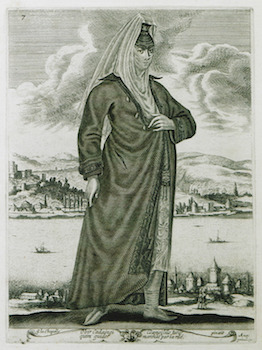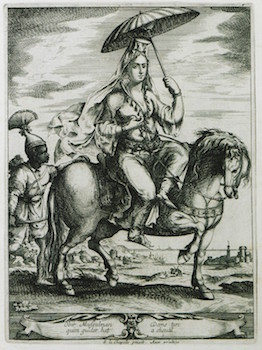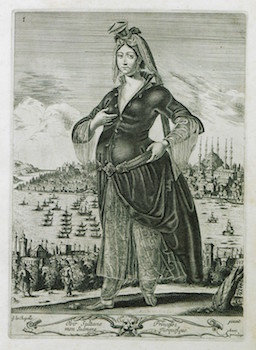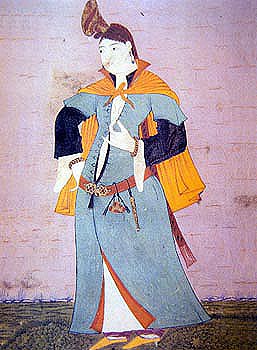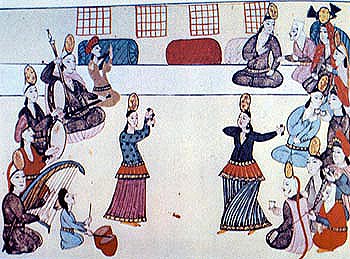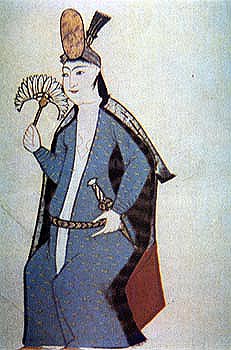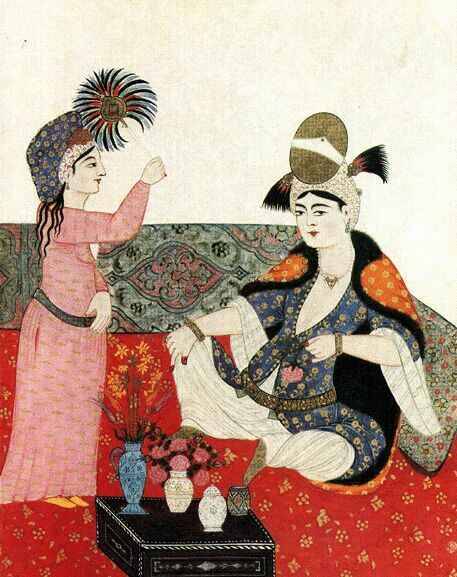 |
One apparent change at the beginning of the 17th century is the use by women of metal belts or belts made with metal findings, as opposed to the soft cloth sashes so prevalent in the 16th century. The most noticeable differences in women's clothing is the new style of hat. Rather than the low "pillbox" style, the hat now is taller, and it narrows as it rises, in the shape of a truncated cone. There is also a greater use of aigrets (feather decorations) on hats. As the century progress hat styles continue to change and there are some differences in clothing as well. The miniature on the left depicts a young woman wearing a sleeveless, v-necked zıbın over her long loose-sleeved ankle-length gömlek. Her ankle-length don and slippers are visible below her gömlek. Her conical cap decorated by a plumed aigrette, sorguç, is a typical example from the beginning of the 17th century. The most flamboyant piece in her outfit is the sash decorated with gold pieces which are enhanced with niello. Her gold chain necklace, the gold buttons on her waistcoat, and the thick gold braided bracelets on each arm complete her outfit. On the right, a woman in a sheer white gomlek and white don, over them a red neck-high zibin, partially unbuttoned. She also wears pearl earrings, several gold chains, gold finger rings, a gold plaque belt, with bath-house nalin on her feet
|
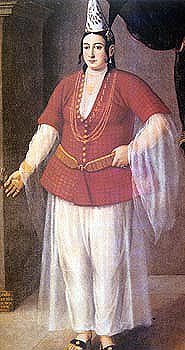 |
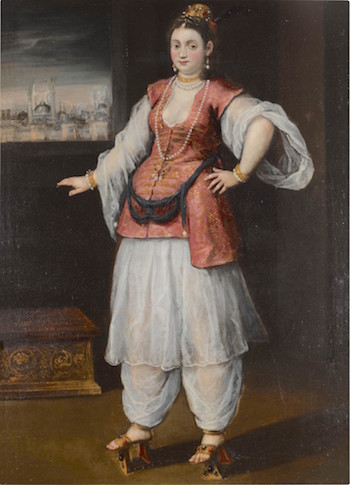 "Portrait of a Sultana", wearing white don, white gömlek, red and gold emproidered zibin, with a cappricio of Constatinople in the backround. By Andrea Vicentino (1542-1619) who never went to Kostantiniyye and never saw an Ottoman woman. |
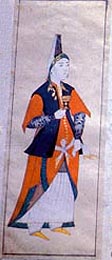 |
Peter Mundy, an English traveller, visited Istanbul in 1618. His illustrated manuscript, A briefe relation of the Turckes, their Kings, Emperors or Grandsigneurs, their conquests, religion, customes, habbits at Constantinople, etc., gives an Englishman's account of Ottoman court life. It is illustrated by small individual album leaves inserted into his manuscript, purchased from artists in Istanbul, produced primarily for visiting foreigners. The manuscript is currently in the British Museum. |
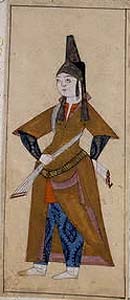 |
|
